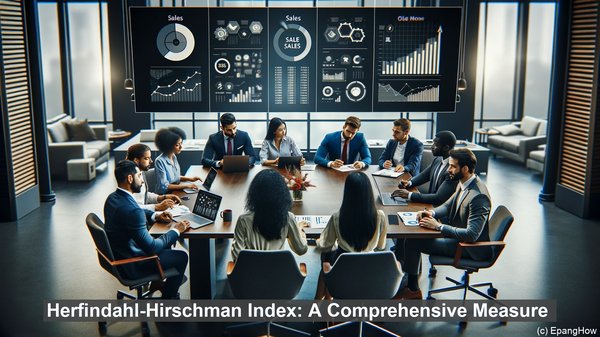Introduction: The Importance of Competition Analysis
Hello everyone! In today’s article, we’re going to explore the world of competition analysis. In an increasingly globalized and interconnected market, understanding the dynamics of competition is crucial for businesses, policymakers, and consumers alike. By examining the level of competition in a market, we can gain insights into its efficiency, potential for innovation, and overall consumer welfare. Two key metrics that aid in this analysis are the market concentration ratio and the Herfindahl-Hirschman Index. Let’s dive in!

Market Concentration Ratio: A Snapshot of Market Structure
The market concentration ratio, often abbreviated as MCR, is a measure that provides a snapshot of the market structure. It quantifies the extent to which a market is dominated by a few large firms or is more evenly distributed among several competitors. MCR is calculated by summing the market shares of the largest firms in the market. For example, if we have a market with four firms and their market shares are 40%, 30%, 20%, and 10% respectively, the MCR would be 0.4 + 0.3 + 0.2 + 0.1 = 1.0. A higher MCR indicates a more concentrated market, where a few firms hold significant market power.
Interpreting Market Concentration Ratio
While the MCR provides a quick snapshot of market structure, it doesn’t offer a nuanced understanding of the competitive dynamics. For instance, a high MCR may not necessarily imply anti-competitive behavior or harm to consumer welfare. It’s essential to complement the MCR with other measures and contextual information to draw meaningful conclusions. Additionally, the MCR doesn’t account for the size of the market or the potential for new entrants, which are crucial factors in assessing competition.
Herfindahl-Hirschman Index: A Comprehensive Measure
To overcome the limitations of the MCR, we turn to the Herfindahl-Hirschman Index, or HHI. The HHI is a more comprehensive measure that considers the market shares of all firms in the market. It is calculated by squaring the market share of each firm and summing them up. For example, if we have a market with three firms and their market shares are 40%, 30%, and 30%, the HHI would be (0.4^2) + (0.3^2) + (0.3^2) = 0.34. The HHI ranges from 0 to 1, with a higher value indicating a more concentrated market.

HHI and Market Competitiveness
The HHI offers a more nuanced understanding of market competitiveness. A low HHI suggests a highly competitive market, with numerous firms having relatively equal market shares. On the other hand, a high HHI indicates a concentrated market, where a few firms dominate. The HHI is often used as a screening tool by regulatory authorities to identify markets that may require closer scrutiny due to potential anti-competitive behavior. It can also be used to track changes in market concentration over time and assess the impact of mergers and acquisitions.
Limitations and Considerations
While the MCR and HHI are valuable tools, it’s important to recognize their limitations. Both measures are static and provide a snapshot of market structure at a given point in time. They don’t capture the dynamic nature of markets, where competition levels can change rapidly. Additionally, the MCR and HHI are just two pieces of the puzzle. A comprehensive competition analysis requires considering other factors, such as barriers to entry, buyer power, and potential for collusion.
